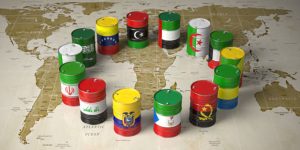Both OPEC and the International Energy Agency are predicting next year’s market to be one of the tightest in recent history. According to a Financial Times post, the two bodies have based this assumption on recovering demand in China and continued growth in India. The prediction also runs counter to widespread fears of recession. With oil prices currently declining from record highs, it can be difficult to predict where the market will go next.

Demand is Predicted to Rise in Any Case
However, as Investing.com reports, it’s not that the IEA is completely ignoring those recession fears. In fact, the organization has reduced its expected increase in demand for next year specifically because of recessionary forces. That said, they are still predicting an increase in demand of 2.1M b/d – down from 2.2M b/d estimated last month. Still, after 2022’s surge in oil prices, is it even possible to determine where demand will go from here?
Well, in its first forecast for 2023, OPEC said it expected average demand to rise by 2.7 million barrels a day next year. This would put estimates at roughly 103mn b/d total. The forecast is based heavily on increased economic activity and even makes light of fears that a recession would crush demand.
At the same time, oil production from non-OPEC countries is only expected to grow by 1.7mn b/d. This will place a heavy burden on OPEC’s 13 members, some of which (notably Nigeria and Angola) are already struggling to meet current output targets. Furthermore, Saudi Arabia is already committed to pumping 11mn b/d by August – a level of production it has never sustained for a prolonged period.
Get all the latest information on global commodities and metals. Sign up for the FREE weekly MetalMiner newsletter here.
Not Everyone Agrees with OPEC’s Estimates
To add uncertainty to the situation, the FT stated that OPEC’s analysis might not properly account for Russia. In fact, it assumes that, despite the war in Ukraine, Russian oil output will only decrease by 200,000 b/d in 2023 to 10.4mn b/d. This is a highly uncertain figure, to put it mildly.
So, to bridge the gap between supply and demand, the FT states OPEC would therefore have to pump an average of 30.1mn b/d during the year. This, according to the cartel’s own estimate. But seasonal variations in demand mean the call on OPEC crude would reach as much as 32mn b/d in the last three months of the year. That is approximately 3.3mn b/d more than the 28.7mn b/d OPEC’s members produced in June.
However, not everyone is quite so bullish. For instance, oilprice.com reported this week how widespread recession fears are affecting investment. The article states that hedge fund and other money managers have been quitting their oil positions at one of the fastest rates in the post-pandemic period. Indeed, they sold a total of 201 million barrels in the past four weeks. That current market view has resulted in sharp falls this week. This has left the WTI down more than 7% to below $96.50 and left Brent hovering around $100.
It’s important to note that fears of ongoing disruption in China are not constrained to oil. This past week, COVID-triggered lockdowns resulted in iron ore prices plunging on concerns of weakening Chinese demand. Many traders were shocked to see the front-month Dalian contract lose 4% in one day, dropping to just $110/mt.
Either Way, the Debate Over Oil Prices Will Resolve Soon Enough
So who is your money on? On the one hand, you have OPEC and the IEA’s optimistic view of constrained supply and rising demand. On the other hand, you have the prevailing market view. It states that recessionary pressures in the West and further lockdown-related disruption in China will hamper recovery and drastically reduce demand.
Both could be correct, of course. Perhaps the former will describe the long term while the latter describes the short term? In the end, a lot will depend on whether or not a recession takes place and its overall severity. We also have to consider China’s recovery after the October re-election of President Xi, and Russia’s ability to continue to pump and find markets for its oil.
There are too many moving pieces to call it at the moment and too much potential for volatility. Ultimately, the best advice is for exposed consumers to lock in profits whenever they can.
Keep yourself informed of important metal and commodities news with MetalMiner’s monthly MMI Report. Sign up here to begin receiving it completely FREE of charge. If you want a serious competitive edge in the metals industry, try a demo/tour of our revolutionary insights platform here.



.jpg)